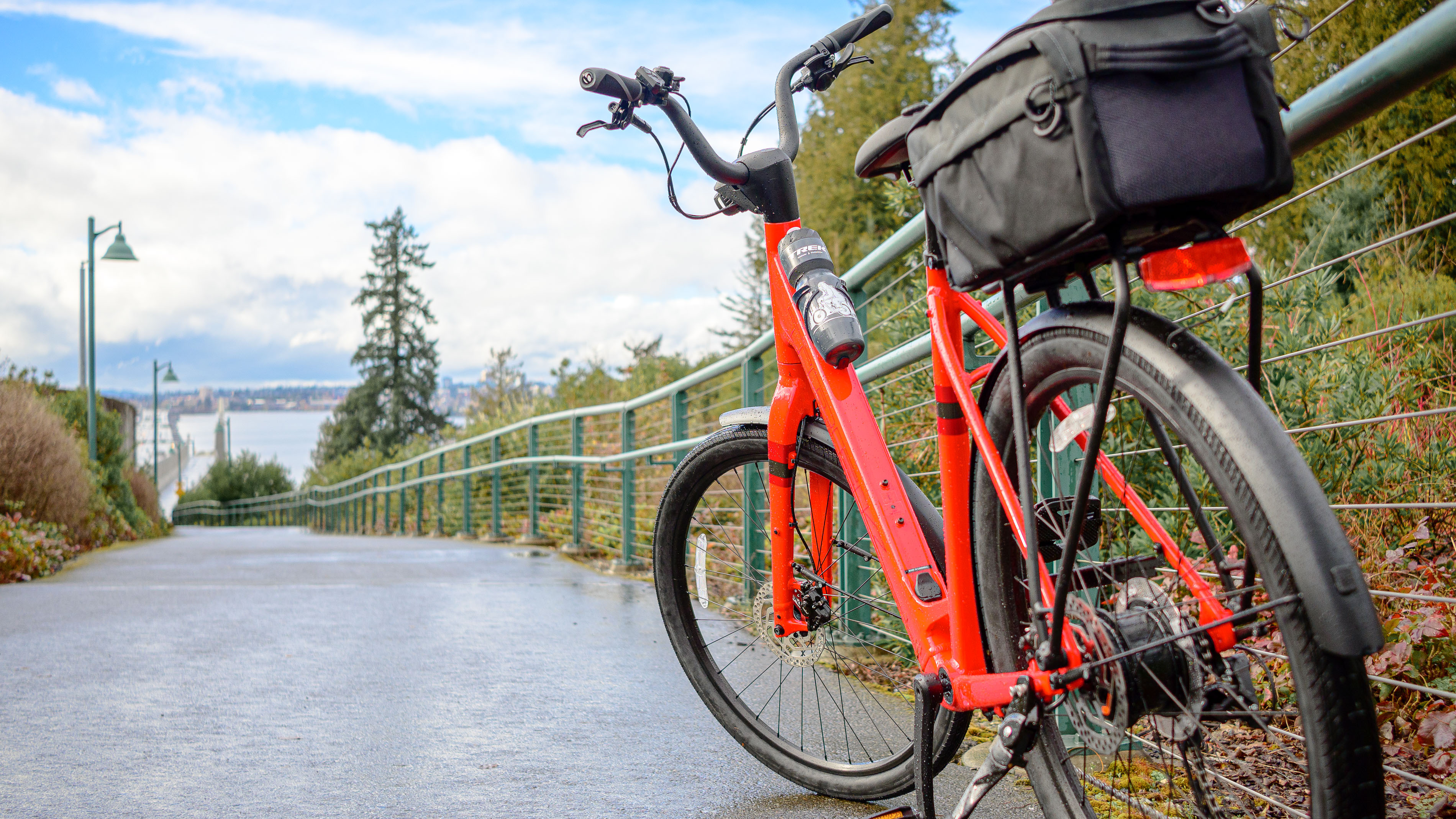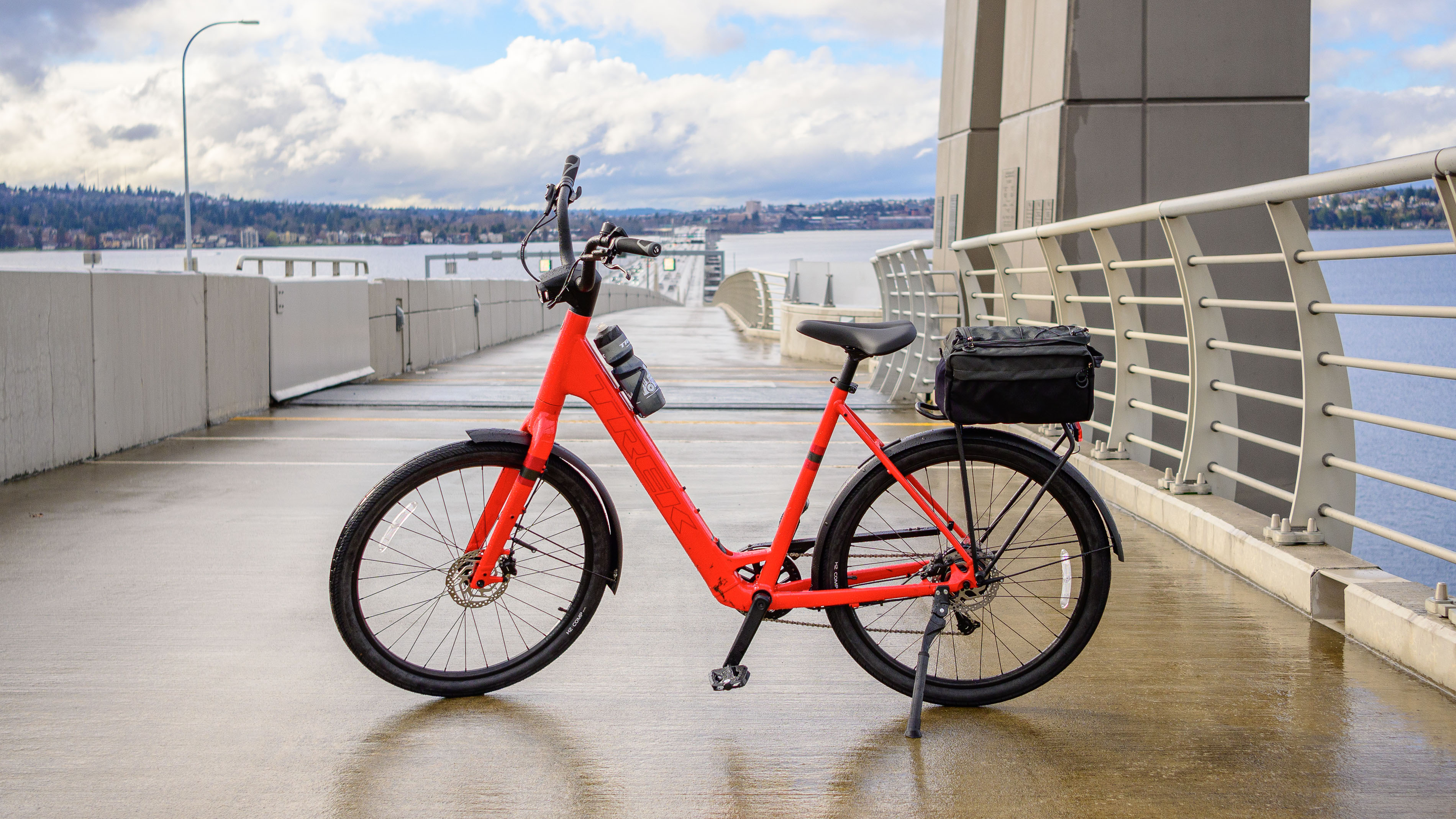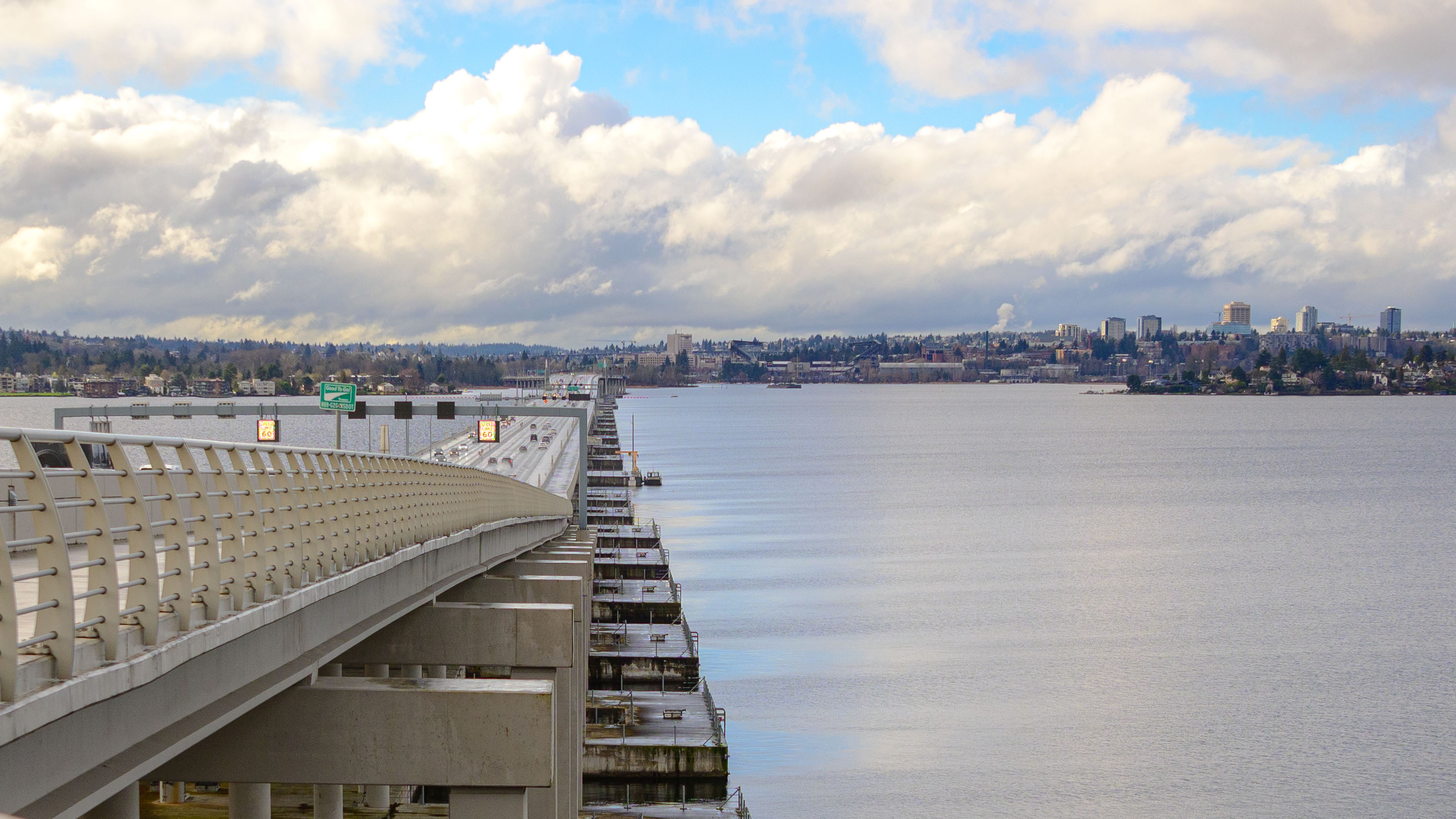I just took my first long range electric bike ride on the world's longest floating bridge – 3 things I learned

I just got back from my first long range electric bike ride, a 17.5-mile jaunt through the forests, suburbs and cities of western Washington state. And I could not have picked a better day. With a mix of rain, wind and hail in the forecast, I suited up in my best wet weather gear and headed out to the Trek store in Redmond, Washington, to pick up my e-assist ride.
Properly briefed on the ins and outs of the Trek Verve+ 1 Lowstep LT, a commuter-friendly ebike with a big comfy seat and high handlebars, I thanked the store staff — good looks, Alex — buckled my helmet and headed out into the wet, 40-degree afternoon (that’s 4 degrees Celcius, for my non-American friends).
In the span of a few hours, I encountered every single season the PNW has to offer, cruised at speeds of up to 43mph and traversed the world’s longest floating bridge in glorious fashion just as the firmament cleared and the sun came out, illuminating the distant Emerald City in butterscotch brilliance. I also used every last bit of battery power to make my way back home.
With much time for introspection, here are three lessons I learned from my epic first long range electric bike ride.
1. Ebikes go a lot faster than I thought
While I’ve taken a few short trips on Citibike/Lime-style ebikes, I’ve never tried a consumer model. Most public rentals are pretty sluggish, and so my expectations for motor power were not particularly high.
The Trek Verve+ 1 sports a 250W rear hub drive motor with a decent amount of oomph. With little effort on the part of the rider, the motor can get you to about 20mph on flat ground with the e-assist set to full power — there are three positions.
However, when cruising down a steep hill, locked into the highest gear — the bike has an eight-speed drive chain — I was hitting speeds just shy of 45 mph, which is considerably faster than I’m used to going on a standard bike. Meanwhile, on flat ground in the highest gear, I was comfortably able to cruise at between 25 and 30 mph.
Get instant access to breaking news, the hottest reviews, great deals and helpful tips.
2. It takes a little while to get the hang of e-assist

When using the lowest e-assist setting, Trek says that the bike has up to 35 miles of range. That’s assuming ideal conditions, though. Taking into consideration the cold and the 1,400 ft of elevation gain involved in my excursion, I didn’t expect anywhere near that range.
Then again, I didn’t use the lowest power option much — where’s the fun in that? At max power, the unofficial approximate range of the bike is closer to 16 miles. This checks out.
Users adjust the power setting via controls on the left handlebar. However, it took me a good few miles to get the hang of jumping between power modes. For example, when rolling up to a stoplight, it’s a good idea to lower the power before taking off again. Otherwise, the bike accelerates with quite a force as soon as you begin peddling.
In retrospect, I shouldn’t have spent so much time cruising with the full e-assist engaged at the start of my ride, where it was reasonably flat. When it came to the last few miles of my journey — where half the total elevation is gained — the power indicator was down to its last bar of juice, and I was seriously stressing. Fortunately, the blinking low-power light didn’t click on until moments after I crested my final hill.
3. It’s fun to pass regular cyclists (but be polite)
I used to get annoyed with electric bike riders blasting past me on trails, but no longer. As long as my fellow pedal-pushing enthusiast gives me room to continue at my pace and doesn’t put myself or others in danger, I’ve got no issue being overtaken.
Well, I finally had the chance to pass a spandex-clad, Oakley-mirrored-glasses-sporting, carbon-fiber-bike fast-boy, and it was quite a rush. Plus, the fact that the Verve+ 1 is the furthest thing from a fast-looking bike makes my overtake all the more humorous.
Bonus: The world’s longest floating bridge has 33 pontoons

I had to make several stops during the first 10 miles to wipe the rain from my glasses. At one point, I even swapped out my soaked gloves for another pair — this was when the rain was coming down sideways.
Despite the initial nastiness, things took a turn for the better as I made my approach to the Governor Albert D. Rosellini Bridge, which traverses Lake Washington, a large glacial ribbon lake on Seattle’s east side.
Right before peddling onto the ramp leading up, the icy rain subsided, and the sun came out for about 15 minutes. This was just enough time to zoom across all 7,710 feet and 33 pontoons — which I learned about from an informative plaque along the way — that make up the record-setting span. And gosh darn, was that part of my journey awe-inspiring.
With water views on either side of me, Bill Gate’s sprawling compound in the distance behind me and the Seattle skyline glowing ahead — the Olympic Mountains just barely visible behind it — I let out a long and loud “yaaaaahooooooo” to no one in particular as I felt overcome with gratitude for all the wonderful things in my life.
The good vibes quickly subsided as I touched down in Seattle proper and had to face the final seven hundred feet of incline, rush hour traffic, and another sprinkling of rain.
My first long range electric bike ride – final thoughts
Despite the low points and a very numb face, I had an absolute blast on my first long range electric bike ride. And I’m looking forward to getting back out there again this weekend.
After all, Woodinville Wine Country is just a short 20-mile bike ride away. And now I know how to better conserve my battery power.
More from Tom's Guide:

Dan Bracaglia is the Tom’s Guide editorial lead for all things smartwatches, fitness trackers and outdoor gear. With 15 years of experience as a consumer technology journalist testing everything from Oura Rings to instant cameras, Dan is deeply passionate about helping readers save money and make informed purchasing decisions. In the past year alone, Dan has assessed major product releases from the likes of Apple, Garmin, Google, Samsung, Polar and many others.
An avid outdoor adventurer, Dan is based in the U.S. Pacific Northwest where he takes advantage of the beautiful surroundings every chance he gets. A lover of kayaking, hiking, swimming, biking, snowboarding and exploring, he also makes every effort to combine his day job with his passions. When not assessing the sleep tracking and heart rate accuracy of the latest tach gadgets, you can find him photographing Seattle’s vibrant underground music community.
